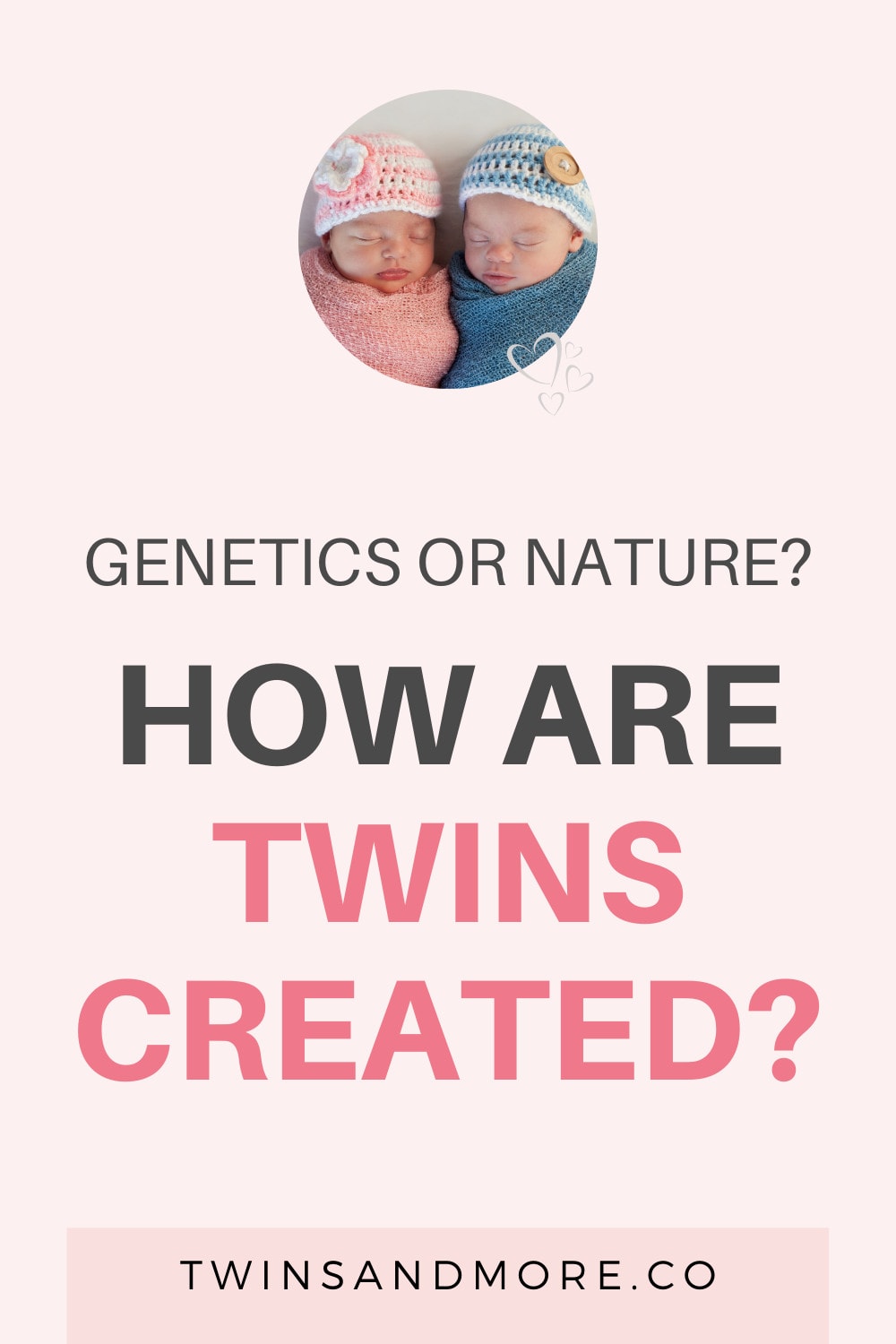Twins. Just the mention of the word often triggers an immediate curiosity and fascination into what causes the creation of two tiny babies in a single pregnancy.
I’m sure there have been many bets placed on how twins are created. You may have heard of the well-known wives tale that twins ‘skip’ a generation has newlyweds either excitedly hoping or secretly dreading starting a family.
So… how are twins made? Is it genetic or just a random twist of nature?

Types of twins
Firstly, we have to talk about the two types of twins. These are Identical (monozygotic) and Fraternal (dizygotic). Twins are either be created from one egg (monozygotic) or two (dizygotic).
READ MORE: Types of Twins – Did you know there are ELEVEN?
Fraternal Twins (dizygotic)
Let’s talk about fraternal twins first.
Dizygotic (fraternal) twins occur when two egg cells are released. Then, each egg is fertilized by a different sperm cell.
Fraternal twins are the most common type of twinning and makeup around two-thirds of all twins born.
To have two eggs release requires a state of hyper-ovulation. Whether that be due to the age of the mother, diet, environmental factors or genetics.
So, sorry Dad. Having twins is nothing to do with your super sperm.
Studies have identified a specific gene that causes hyper-ovulation that can be passed down either side of the family, which, given the right circumstances, can eventuate in twins. It’s why twins can run in families, as this gene can be passed down through the generations.
Do twins skip generations?
I’m glad you asked. There is no scientific proof behind the old-wives-tale about twins skipping generations.
If you are a fraternal twin and your mother happened to pass the hyper-ovulation gene on to you (assuming you are female). Your chances are reasonably high that you could have fraternal twins too.
I’ll leave you to decide if that’s exciting or scary.
Identical Twins (monozygotic)
Now for Monozygotic twins or Identical twins, it’s a different story.
Identical twins occur as a result of one egg splitting post-fertilization.
This creates two embryos.
As the research stands today, there is thought to be no genetic influence on creating identical twins.
However, studies relating to cell stickiness are being carried out to determine if genetics could play a part.
In most cases, the cause of identical twins is just down to beautiful nature.

PIN TO SAVE AND READ LATER













